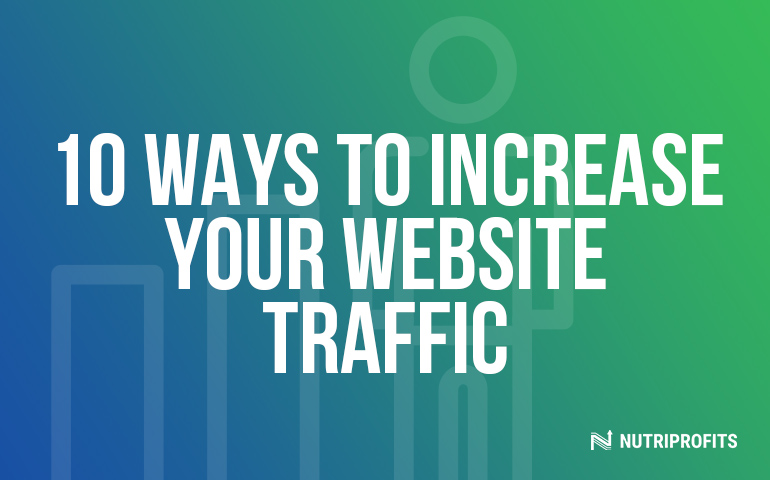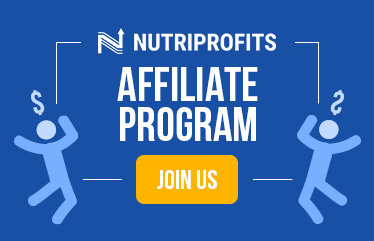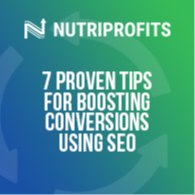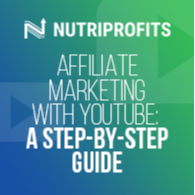Every affiliate marketer wants someone to notice their website and buy a product or two from it. Affiliate marketing is a somewhat competitive field since there are many things a marketer can sell.
Unfortunately, there are only so many ways one can sell a product or service. Consumers get tired when an affiliate marketer keeps repeatedly depending on the same method of selling. So, how can the marketer fix this?
Here are 10 proven ways to increase your website traffic to avoid being repetitive and stale.
01: Writing Guest Posts
Picture this–the affiliate marketer already has their own blog but wants to reach out to more consumers. How can this marketer approach this?
One way is by writing guest posts for other blogs. If the affiliate marketer writes for another blog, that blog will let the marketer link back to their website. Some benefits of writing guest posts are:
- Increased referral traffic
- More backlinks
- Increased SERP rankings
- Increased brand awareness
Some websites will let affiliate marketers find relevant guest posting opportunities within their industry.
Of course, the affiliate marketer should research any websites within their industry before pitching in and writing any guest posts. It wouldn’t make sense to write a guest post about pottery on a blog about nutrition and vice versa.
It’s also best to see whether a blog is high enough in quality to write a guest post on. A great way to do so is by checking the website’s domain authority and studying its guest posting guidelines. It also helps to ask the publication if they promote guest posts on social media and tag guest authors there.
02: Using Social Media
People are using social media more and more often for various uses. Some people use it to connect with friends and family, while others use it to promote their businesses. Both of these are fantastic motives for increasing a website’s traffic.
The average adult spends 147 minutes on social media daily. It would make sense that someone might click on an affiliate marketer’s website while scrolling on a social media website.
That’s where the affiliate marketer comes in. Social media is a powerful tool to garner a consumer base and earn more money. Some of the most popular social media websites to use for affiliate marketing are:
- YouTube
- TikTok
The affiliate marketer can post videos and hashtags on social media websites to promote their products. These websites can help the affiliate marketer foster brand affinity, awareness, and loyalty. They can also help increase the marketer’s website traffic.
Some ways for an affiliate marketer to increase their website’s traffic on social media are:
- Posting content (e-books, videos, infographics, etc.)
- Engaging with followers and others (replies, liking posts, tagging, etc.)
- Using hashtags representing the affiliate marketer’s brand
- Going live on video
- Including a call-to-action on posts
Of course, there are many trends and fads to follow, but it’s best to stay authentic. Many consumers can see through a phony. Thus, consumers will downvote, delete, or even ban the affiliate marketer’s post if they suspect them of blatant marketing.
The thing about social media is that the affiliate marketer should have a consistent posting schedule. The more often the marketer posts, the more attention they’ll receive. If the marketer posts infrequently, consumers will go somewhere else. Thus, it’s best to post daily as much as possible.
03: Advertising
This may seem like a no-brainer, but many wouldn’t believe how much advertising helps increase their website’s traffic. The greatest thing about advertising is that there are so many ways to do so!
Besides social media, the affiliate marketer can collaborate with someone on a podcast. Affiliate marketing has plenty of non-competing brands with similar audiences. Collaborating with a marketer with a similar brand and audience makes sense. That way, that marketer’s audience will more likely go to that other marketer’s website.
Remember the authenticity advice from earlier? It helps with advertising, too. Organic search is better at driving traffic than other methods by 5.66%. Of course, it helps to include those other methods like pay-per-click (PPC) ads and social media. Combined, organic and paid advertising earns B2B companies around 76% of total traffic.
Those who have the money can buy paid traffic from Google and Facebook. It also helps to run ads on websites like YouTube, TikTok, Quora, and Pinterest. However, these paid ads aren’t as expensive as one might think. For example, search ads on YouTube cost $0.01 per minute.
Another fantastic and cheap way of advertising is by sending email newsletters. Social media is like shouting from a soapbox in the town square. Email newsletters, on the other hand, are like having a one-on-one conversation, making things more personal between the affiliate marketer and their consumers.
Automation makes sending emails en masse easier than ever, but the affiliate marketer can still use tools like customization and segmentation to address consumers’ specific needs and pain points. Email newsletters increase website traffic and yield high ROIs across every marketing method.
Some practices the affiliate marketer can use for marketing their email newsletters are:
- Including enticing information in the email’s subject line and body
- Inserting a button or link subscribers can click on to read more
- Making emails mobile-friendly
- Employing personalization tactics (including subscriber’s name)
- Making emails visually appealing with well-designed templates
- Conducting A/B testing to see which version receives more opens and clicks
Advertising helps the affiliate marketer expand their consumer base, which increases their website’s traffic. The great thing about it is that it isn’t as expensive as they would think.
04: Refreshing Outdated Content
A lot can change in a few years. What people may think is correct now may become incorrect later on. The same thing can be said for affiliate marketing.
When the affiliate marketer updates their website and refreshes outdated content, the marketer’s consumers and search engines’ algorithms will appreciate the updated information. Some ways to update a website are tweaking blog posts and repurposing content as infographics or videos.
When the affiliate marketer doesn’t update their website’s content, search engines will lower their ranking, and competitors will try to “steal” that marketer’s spot.
Some websites will let the affiliate marketer install a free SEO plugin and run an audit. That audit will tell the marketer which posts should be updated.
If the marketer needs to be more specific, they can look at search results to see what these top-ranking posts have that they don’t. Ranking drops often occur because these things may be outdated:
- Links
- Process
- Screenshots
- Stats
- Year in the title
Sometimes, refreshing outdated sections will be enough, though that depends on the target keyword. In other cases, the affiliate marketer may have to rewrite an entire post. This is common among affiliate marketers.
05: Filling “Missing” Content Gaps
A content piece can rank for thousands of keywords, most being different ways of looking for the same thing. However, some will be essential subtopics the affiliate marketer must cover in their content.
Covering these content gaps (subtopics currently missing) allows the affiliate marketer to rank higher for their potential keyword and increase their website’s traffic.
Some websites will let affiliate marketers find content gaps by entering their domains into a site explorer. They can access a content gap tool and enter a few competing pages. In the bottom section, the affiliate marketer can enter the URL for which they want to fill content gaps and hit “show keywords.” Then, the marketer can see if there are any subtopics they can cover.
Filling missing content gaps is a simple process that doesn’t take long. It’s also a great way of increasing website traffic.
06: Thinking About SEO
SEO, or search engine optimization, is a fantastic way of attracting consumers to a website. There are many forms of SEO, but one form worth mentioning is on-page SEO.
On-page SEO is fantastic for determining where an affiliate marketer’s website ends up in the SERPs (search engine results pages). The higher up in the SERP the affiliate marketer is, the more likely consumers are to click on their website.
To get higher up on the SERP and increase website traffic, make sure each page element (title, header, meta description, alt-text, and URL) are rich in keywords and focused on the page’s user intent.
The affiliate marketer’s content also helps with SERP ranking. That’s why the affiliate marketer should include relevant keywords in their content. Keywords must be used naturally instead of being stuffed. Remember, many consumers can see through a phony.
Those who have the money can hire an SEO agency. Agencies can offer valuable insights and perform audits that identify issues keeping the affiliate marketer’s website from showing up in SERPs.
07: Targeting What Consumers are Searching For
SEO works like a charm to increase an affiliate marketer’s website traffic. Ranking high on a search engine can help attract organic traffic. However, there needs to be something worth checking out for the consumers.
That’s why the affiliate marketer should write about something consumers might search for. Some websites let the marketer enter a few relevant keywords into a keyword explorer and go to the “matching terms” reports. There, the marketer can switch the tab to “questions.”
When switching the tab, the marketer can see tens of thousands of potential topics they can target. If that’s too much for the marketer, they can narrow that list by looking for keywords high in traffic potential or low in keyword difficulty.
Traffic potential is the estimated amount of search traffic the affiliate marketer can earn for ranking first in a particular topic. Some websites calculate traffic potential by estimating the search traffic the current first result page gets.
Keyword difficulty is precisely what you’d think it means– how difficult it is for a keyword to rank in the top 10 organic search results.
When the affiliate marketer reduces their list to something they can manage, they can pick out keywords that may be relevant to their website. It’s about as simple as it sounds and a great way of increasing the marketer’s website traffic.
08: Giving Away Good Stuff
The primary purpose of any affiliate marketer’s website is to sell a product or service and make money. That’s something every marketer wants, but some things may be better off being given away for free.
Let’s come up with a scenario. Suppose someone is going to a grocery store to buy some food. They see a table in the store with various cookies on sheet pans. That person walks up to the table and discovers they can taste a cookie or two and even take some home for free. Those are called free samples or freebies.
Many businesses give away free samples, or freebies, to attract more consumers, and the same can be applied to affiliate marketers. Of course, affiliate marketers can’t give away something like cookies for free digitally, but there are other things they can give away as a free sample.
Some businesses give away free calendar templates, while others give away subscriptions for email newsletters. Freebies are a fantastic way of attracting consumers and increasing website traffic. Who doesn’t like free stuff?
09: Adding an FAQ
When searching for something, a consumer may have some questions they want to ask. The affiliate marketer usually answers those questions in their posts, but it’s not always possible to answer every question while naturally weaving them into their content.
That’s where the FAQ comes in. FAQs, or frequently asked questions, can be easily added at the end of a post. Consumers use search engines to find specific, thorough, and accurate answers, so the affiliate marketer’s content should answer those questions in that manner.
An FAQ section is an excellent way of answering consumers’ questions, ranking for more long-tail keywords, and gaining more search traffic.
10: Making Amazing Content
The affiliate marketer can do everything listed in this article, but if they don’t make fantastic content, they won’t gain much traffic for their website.
One way to make great content is for the affiliate marketer to post what makes them unique compared to others. When they announce what makes them unique, they can share what makes them the best at meeting consumers’ needs.
Websites with blog content generate 434% more search-engine-indexed pages than those without. Websites with more than 16 monthly posts earn nearly 3.5 times more traffic than those that publish zero to four monthly.
Conclusion
Every affiliate marketer wants someone to notice their website and buy a product or two from it. Using these methods mentioned above, any affiliate marketer can increase their website traffic by a tremendous amount.





.jpg)

-1-1.jpg)